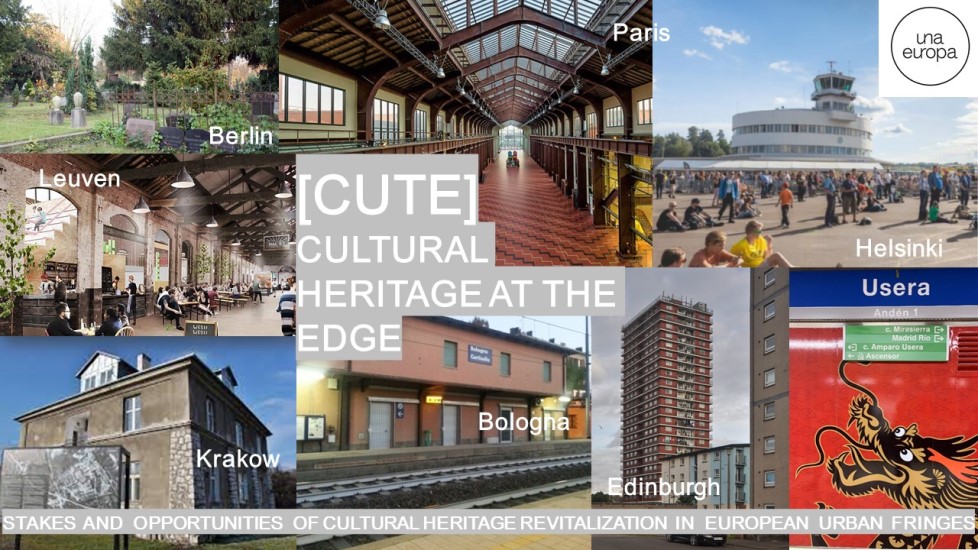
|
|
|
Main menu
HELP
|
[CUTE] CULTURAL HERITAGE AT THE EDGE. Stakes and opportunities of cultural heritage revitalization in European urban fringes The project CULTURAL HERITAGE AT THE EDGE (CUTE). Stakes and opportunities of cultural heritage revitalization in European urban fringes, was selected in 2021, in the framework of an annual call for applications for seed funding of Una Europa university alliance. Una Europa brings together 8 major European universities: Freie Universität Berlin; Alma Mater Studiorum – Università di Bologna; Uniwersytet Jagielloński w Krakowie; University of Edinburgh; Helsingin Yliopisto; KU Leuven; Universidad Complutense de Madrid; Université Paris 1 Panthéon-Sorbonne. It is one of the first European Alliances selected by the European Commission for 3 years funding (2019-2022). The aim of its seed funding initiative is to support the initiation of long-term collaborative activities between the partner universities. Researchers from all eight Una Europa universities participate in the CUTE project, whose objective is to analyze the challenges and possibilities of heritage development in the urban fringes of Una Europa cities, considering that cultural heritage plays an important role in the economic, cultural and social revitalization of urban peripheries. The approach is interdisciplinary (geography, economy, history of art...) and intersectoral (scholars, local stakeholders, culture and heritage institutions, NGOs...). The project consists of: 1. Analysis and digital documenting of the defined case studies in each city/metropolis by the dedicated local teams and associated Master students that is currently taking place. Through bibliographic research, media analysis and interviews with stakeholders, we research the on-going urban dynamics, heritagization processes and different aspects of redevelopment approaches. 2. The next step will focus on comparing the case studies – the local teams will compare processes of heritagization. They will document and analyse encounters and disagreements around the heritage of these areas to lay the foundations for the “dynamic production” of new cultural heritages. They will compare how cultural heritage emerges from public activism and participation based on the study of “institutional” projects to revitalize cultural heritage in the 8 case studies of urban fringes and suburbs: social housing, industrial heritage and even spaces of recent historical memory (related for example to the workers’ struggle, and neighborhood associationism). 3. Finally, the third phase will be dedicated to dissemination of results – the works will allow producing a first draft of a position paper/manifesto on cultural heritage of urban fringes. It will be presented and discussed during a workshop (Paris, March 17-18, 2022) bringing together the local teams and different stakeholders. The final position paper/manifesto will also be presented at a press conference. Furthermore, the results will also be published in a special issue in an open-sciences journal. |
| Online user: 2 | Privacy | Accessibility |

|
